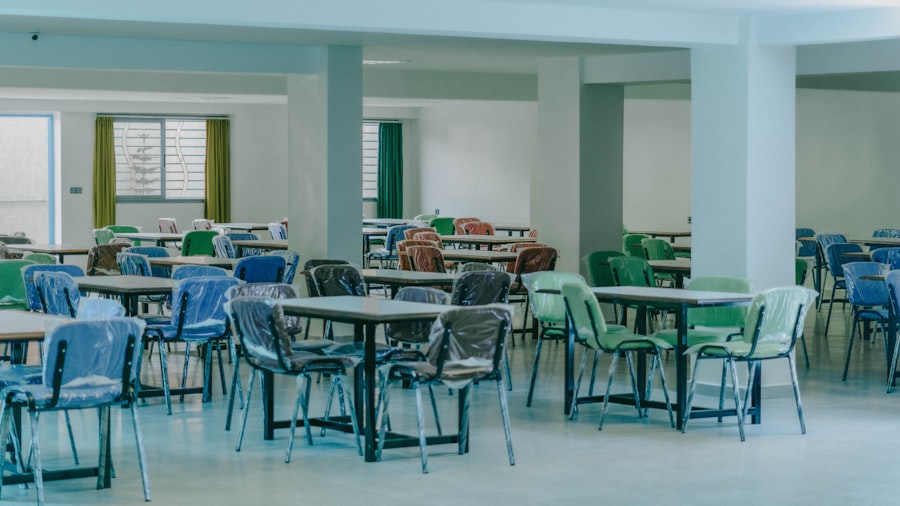
Jet Lag and Post-Travel Blues: Coping Strategies
Jet lag is a physiological condition that occurs when a person travels across multiple time zones, disrupting their internal body clock, or circadian rhythm. This misalignment can lead to a range of symptoms, including fatigue, insomnia, irritability, and difficulty concentrating. The severity of jet lag often correlates with the number of time zones crossed; for instance, traveling from New York to Tokyo involves crossing 14 time zones, which can result in more pronounced symptoms than a shorter trip from New York to London.
The body typically takes about one day to adjust for each time zone crossed, making long-haul flights particularly challenging for travelers. In addition to the physical toll of jet lag, many travelers experience what is commonly referred to as post-travel blues. This emotional state can manifest as feelings of sadness, anxiety, or disconnection after returning home from a trip.
The excitement and novelty of travel can create a stark contrast to the routine and familiarity of daily life, leading to a sense of loss or longing for the experiences just had. Post-travel blues can be exacerbated by the stress of readjusting to work or personal responsibilities, making it essential for travelers to recognize and address these feelings.
Key Takeaways
- Jet lag is a temporary sleep disorder that occurs when traveling across multiple time zones, causing fatigue, insomnia, and difficulty concentrating.
- To minimize jet lag, adjust your sleep schedule a few days before traveling, stay hydrated, and expose yourself to natural light during the day.
- During travel, manage jet lag by staying active, taking short naps, and avoiding alcohol and caffeine close to bedtime.
- Post-travel blues can manifest as feelings of sadness, irritability, and disorientation, and it’s important to recognize and address these emotions.
- To recover from jet lag and post-travel blues, focus on maintaining a healthy diet, engaging in regular exercise, and establishing a consistent sleep routine.
Pre-Travel Preparation: Tips to Minimize Jet Lag
Adjusting Your Sleep Schedule
Gradually adjusting your sleep schedule in the days leading up to your departure can significantly reduce the impact of jet lag. If you’re traveling eastward, try going to bed an hour earlier each night; if you’re heading west, aim to stay up later.
Maintaining a consistent sleep schedule during this adjustment period is crucial, as it reinforces your body’s natural circadian rhythms.
Hydration and Sleep Quality
Dehydration can exacerbate the symptoms of jet lag, so it’s advisable to drink plenty of water in the days leading up to your flight. Avoiding alcohol and caffeine before and during your flight can also help maintain hydration levels and promote better sleep quality. Additionally, consider packing sleep aids such as an eye mask and earplugs to create a more conducive sleeping environment on the plane.
Setting Yourself Up for Success
By taking these proactive steps, travelers can set themselves up for a smoother transition into their new time zone. By adjusting your sleep schedule, staying hydrated, and creating a comfortable sleeping environment, you can minimize the effects of jet lag and start your trip off on the right foot.
Coping Strategies During Travel: How to Manage Jet Lag

Managing jet lag during travel requires a combination of strategic planning and self-care practices. One effective approach is to align your activities with the local time zone as soon as you board the plane. This means adjusting your meal times and sleep schedule to match your destination’s time zone, even if it feels unnatural at first.
For example, if you are flying overnight and it’s daytime at your destination, try to stay awake during the flight and engage in activities that keep you alert, such as reading or watching movies. In-flight exercises can also play a vital role in mitigating jet lag symptoms. Simple stretches and movements can improve circulation and reduce stiffness associated with long periods of sitting.
Additionally, taking short walks up and down the aisle can help keep your energy levels up and prevent fatigue. When it comes time to sleep on the plane, creating a comfortable environment is key; using a neck pillow, blanket, or even a travel-sized pillow spray with calming scents can enhance your ability to rest. By implementing these strategies during travel, individuals can better manage the effects of jet lag.
Post-Travel Blues: Recognizing and Addressing the Emotional Impact
| Emotional Impact | Recognition | Addressing |
|---|---|---|
| Feeling of sadness | Recognize signs of withdrawal and low mood | Engage in self-care activities, seek support from loved ones |
| Anxiety and restlessness | Identify feelings of unease and agitation | Practice relaxation techniques, maintain a routine |
| Lack of motivation | Notice decrease in energy and enthusiasm | Set small achievable goals, engage in enjoyable activities |
Post-travel blues can often catch travelers off guard, as they may not anticipate feeling down after what was supposed to be an enjoyable experience. Recognizing these feelings is the first step toward addressing them. Symptoms may include a sense of emptiness or nostalgia for the places visited, difficulty reintegrating into daily routines, or even feelings of guilt for returning to a mundane life after experiencing something extraordinary.
Understanding that these emotions are common can help normalize the experience and encourage individuals to seek ways to cope. Addressing post-travel blues involves finding ways to reconnect with the joy of travel while also grounding oneself in everyday life. One effective method is to create a travel journal or scrapbook that captures memories from the trip.
This not only serves as a tangible reminder of the experiences but also allows for reflection on what was learned or enjoyed during the journey. Additionally, sharing stories and photos with friends or family can foster connection and provide an opportunity to relive those moments. Engaging in activities that evoke memories of travel—such as cooking dishes from the destination or exploring local cultural events—can also help ease the transition back into daily life.
Healthy Habits for Recovery: Nutrition, Exercise, and Sleep
Establishing healthy habits post-travel is essential for recovery from both jet lag and post-travel blues. Nutrition plays a critical role in this process; consuming balanced meals rich in vitamins and minerals can help restore energy levels and support overall well-being. Foods high in antioxidants, such as berries and leafy greens, can combat oxidative stress caused by travel-related fatigue.
Additionally, incorporating complex carbohydrates like whole grains can provide sustained energy throughout the day. Exercise is another vital component of recovery. Engaging in physical activity not only boosts mood through the release of endorphins but also helps regulate sleep patterns disrupted by travel.
Whether it’s a brisk walk, yoga session, or a visit to the gym, finding ways to incorporate movement into your routine can facilitate a smoother transition back home. Prioritizing sleep hygiene is equally important; creating a calming bedtime routine that includes winding down with relaxation techniques—such as meditation or reading—can promote better sleep quality and help reset your internal clock.
Utilizing Light Therapy to Reset Your Body Clock

Light therapy has emerged as an effective tool for managing jet lag and regulating circadian rhythms. Exposure to natural light helps signal to the body when it is time to be awake or asleep; therefore, strategically using light can aid in adjusting to new time zones more quickly. For instance, if traveling eastward, seeking morning sunlight upon arrival can help advance your body clock, while exposure to evening light can be beneficial when traveling westward.
For those who find it challenging to access natural light due to weather conditions or indoor environments, light therapy lamps are available as an alternative solution. These lamps emit bright light that mimics natural sunlight and can be used for about 20-30 minutes each morning after arriving at your destination. This practice not only helps regulate sleep patterns but also enhances mood by increasing serotonin levels in the brain.
By incorporating light therapy into your post-travel routine, you can effectively reset your body clock and alleviate some of the discomfort associated with jet lag.
Seeking Professional Help: When to Consider Therapy or Counseling
While many individuals may experience mild symptoms of jet lag or post-travel blues that resolve on their own, some may find that these feelings persist or worsen over time. In such cases, seeking professional help may be beneficial.
Therapy can also be particularly helpful for those who struggle with anxiety or depression that may be exacerbated by travel-related stressors. Cognitive-behavioral therapy (CBT) is one approach that has been shown to be effective in addressing negative thought patterns associated with post-travel blues. By working with a mental health professional, individuals can gain insights into their emotional responses and learn practical skills for managing their feelings more effectively.
Creating a Supportive Environment: Building a Post-Travel Routine
Establishing a supportive environment upon returning home is crucial for easing the transition back into daily life after travel. Creating a post-travel routine that incorporates elements of self-care can help individuals feel more grounded and connected. This might include setting aside time each day for activities that promote relaxation and well-being—such as reading, meditating, or engaging in hobbies that bring joy.
Additionally, maintaining connections with fellow travelers or friends who share similar interests can foster a sense of community and support during this adjustment period. Organizing gatherings where stories from recent trips are shared or planning future travel adventures together can reignite excitement about exploration while providing an outlet for processing experiences. By intentionally crafting a nurturing environment that prioritizes emotional well-being and connection, individuals can navigate the challenges of post-travel blues more effectively while embracing their everyday lives once again.
FAQs
What is jet lag?
Jet lag is a temporary sleep disorder that occurs when you travel across multiple time zones in a short period of time. It can result in symptoms such as fatigue, insomnia, difficulty concentrating, and irritability.
What causes jet lag?
Jet lag is caused by a disruption to the body’s internal clock, or circadian rhythm, which regulates sleep-wake cycles. Traveling across time zones can throw off this internal clock, leading to the symptoms of jet lag.
How long does jet lag last?
The duration of jet lag can vary depending on the number of time zones crossed and individual factors. It typically takes about one day to recover for each time zone crossed.
What are post-travel blues?
Post-travel blues, also known as post-vacation blues, is a feeling of sadness or depression that some people experience after returning from a trip. It can be caused by a variety of factors, including the end of the vacation, the return to routine, and the stress of travel.
How can I prevent jet lag?
There are several strategies that can help prevent or reduce the symptoms of jet lag, including adjusting your sleep schedule before traveling, staying hydrated, getting exposure to natural light, and taking short naps during the day.
How can I overcome post-travel blues?
To overcome post-travel blues, it can be helpful to ease back into your regular routine, stay connected with friends and family, and plan enjoyable activities to look forward to. Engaging in self-care practices, such as exercise and relaxation techniques, can also help improve mood.



